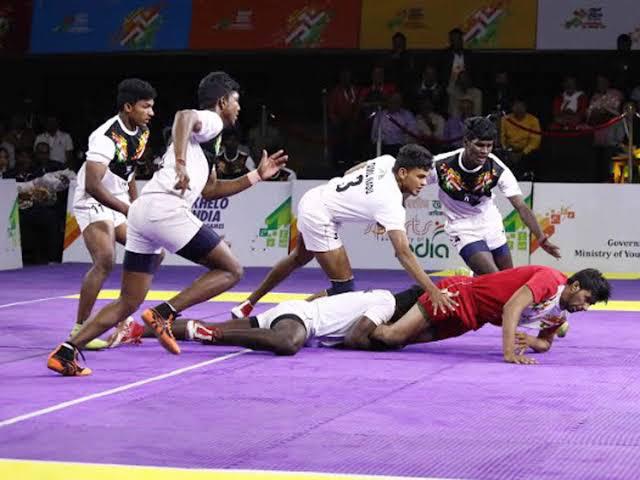
In Muay Thai, kicks are some of the most powerful and effective weapons. A well-timed roundhouse can break rhythm, score points, or end a fight. But kicks also come with risk. When you throw a body or low kick, you expose your leg. If your opponent anticipates the strike, they may catch your leg and leave you vulnerable to sweeps, dumps, or counters.
Being caught doesn’t always mean you’ve made a mistake; it’s a part of the game. What matters is how you respond. In this article, we’ll explore several ways to approach a caught kick in Muay Thai.
The Art Of Muay Thai
Muay Thai is known as the “art of eight limbs” for good reason. Fighters use punches, elbows, knees, and shins to strike, and each tool works in harmony with footwork, clinching, and timing. More than just a striking sport, Muay Thai is also about balance, rhythm, and control.
Catching an opponent’s leg after a kick and using it to disrupt or off-balance them is a core part of Muay Thai technique. The ability to respond when your leg is caught is just as important as knowing how to deliver the kick itself.
Understanding The Value Of Kicks In Muay Thai
Mid and low kicks are heavily favored in Muay Thai scoring. A solid kick that lands on the body, arms, or legs can visibly shift an opponent and make an impact on the judges. Fighters use kicks to damage their opponent’s base, wear down their guard, or force them to open up for follow-up attacks.
Because kicks play such a big role, they’re also one of the most studied techniques in terms of counters. Learning to defend against catches is essential if you plan to kick with confidence and consistency.
Defend Or Counter?
When your leg gets caught, you have to decide whether to recover and reset, or respond immediately with a counter. Your decision depends on your balance, timing, and how securely your opponent has the leg.
Some catches happen clean and tight, making counters harder. Others catch only a moment before impact. The best fighters don’t wait but rather train to respond instinctively based on how the opponent moves.
Defending Kicks
Before looking at specific counters, it’s worth talking about defense. When your leg is caught, your balance is often compromised. Hopping backward on your supporting foot is a common and effective way to regain distance and buy time. Keep your guard up, stay alert, and try not to panic.
If you feel your opponent closing the distance for a sweep or strike, you can either frame with your lead hand or post on their shoulder. This helps maintain separation and keeps your posture upright.
Avoid spinning or twisting too aggressively to free your leg. If you’re off balance, this can make it easier for your opponent to take you down. Stay composed and use simple, efficient movements.
Tips If Your Leg Is Caught
When you sense that your opponent hasn’t locked down your leg completely, you may have time to react. Here are effective responses you can train to recover and turn the situation in your favor.
1) Collar Tie And Knee Shield
As your opponent catches your leg and steps in, you can reach in with one arm for a collar tie while raising your free leg to create a knee shield. This creates distance, protects your base, and slows their momentum. The collar tie gives you control over their posture, while the knee shield makes it difficult for them to close in or sweep.
2) Turn The Shin And Re-Teep
If your kick is caught at mid-level, you can rotate your shin outward while using your hands or hips to push off. This creates an angle and opens space. With that space, you can launch a teep using the same leg to create more distance or push your opponent off balance. This move is especially effective if they’re trying to step in aggressively after catching your leg.
3) Pull The Leg Out Before The Catch Tightens
Sometimes, the smartest move is to focus on staying upright. If your opponent is just holding the leg and not moving aggressively, use your arms for balance, hop on your support leg, and wait for the right moment to step back or counter. Staying calm and composed reduces the chance of being swept or taken down. More often than not when your opponent catches the kick late or with a loose grip, there’s a high chance you’ll be able to break free. If you feel the catch isn’t secure, pull your leg straight back immediately before they tighten their hold. Think of it as snapping your leg back just after impact. This requires quick reflexes and awareness, but if done early, it prevents your opponent from gaining control and allows you to reset your stance quickly.
4) Go For Headshots With Your Hands
In some situations, your leg is caught, but you hands remains mobile. This allows you to throw punches and elbows. The unexpected strikes will more often or not force them to let go and may even score if their guard is open.
Safety Considerations & Being Practical
When your leg is caught, you’re vulnerable to being swept or countered. Drilling your responses with control and awareness is key. Start slow with a training partner to understand the timing and balance required. Always practice on mats and avoid rough takedowns during technical training. Prioritize safety so that you can develop your reflexes without injury.
You don’t need to memorize a long list of counters. Focus on a few that suit your style and body type. If you’re quick and mobile, pulling the leg out or re-kicking may work best. If you prefer control and clinch work, the collar tie and knee shield might be your go-to. Whatever you choose, drill it often so it becomes second nature.
Conclusion
Getting your leg caught in Muay Thai isn’t the end of the world. What matters is how you respond. Whether you defend, reset, or counter, having a plan helps you stay calm and in control. With the right preparation, you’ll not only recover quickly but might even turn the tables on your opponent. Being prepared is what transforms a vulnerable moment into an opportunity to strike back.
You may also like:
Pressure Vs. Precision: Which Style Suits You Best?
Fear is a natural part of competition, especially in combat sports like Brazilian Jiu-Jitsu (BJJ), Muay Thai, boxing, and mixed martial arts (MMA). Whether you’re a first-time white belt entering your local tournament or a…
Everyone has a natural fighting style. Some instinctively look to bombard opponents with volume, while others prefer a more cautious approach. Some people feel more comfortable throwing strikes at attackers, while others prefer to wrestle…
If you’ve ever watched a fight and thought, “Wow, this guy never backs off?” You’ve witnessed pressure fighting in action. Pressure fighting in martial arts is the art of making your opponent miserable with constant…
Hard sparring sessions in martial arts can make you feel like you’ve just walked through a brick wall. You’ve given it your all, and your muscles are sending you a strongly worded memo saying that…
Nothing feels as rewarding as landing a well-executed strike that finishes the match or secures a win. The knockout is the crème de la crème of combat sports like mixed martial arts (MMA), Muay Thai,…
The teep is one of Muay Thai’s fundamental techniques and arguably the most used strike. It’s the kicking version of the jab and serves similar purposes. Also called a push kick, the teep can be…
Bullying remains a serious problem worldwide. Over 30% of students globally have been victims of bullying, according to a UNESCO report. The consequences of bullying aren’t trivial either, with victims often feeling humiliated and helpless….
The check hook is one of the most effective weapons you have against aggressive opponents who want to run you over. It’s a technique that remains effective at the highest levels of boxing and mixed…
Getting stuck in side control is something many Brazilian Jiu-Jitsu beginners have in common. The bridge and roll is often the first reversal BJJ students learn, followed by basic bottom guard sweeps like the scissor…
Grip strength plays a crucial role in mixed martial arts (MMA) and many grappling styles like Brazilian Jiu-Jitsu and wrestling. It turns out that having a strong grip doesn’t just help you to open jars;…
Flexibility plays a crucial role in how well you can execute many fighting techniques. For example, you need a certain level of hip flexibility to throw high kicks in Muay Thai or to use the…
Martial arts training might be what you need if you’re interested in a more exciting way to rebuild that knee, shoulder, or back. Signing up for classes won’t automatically give you some magical ability to…




































